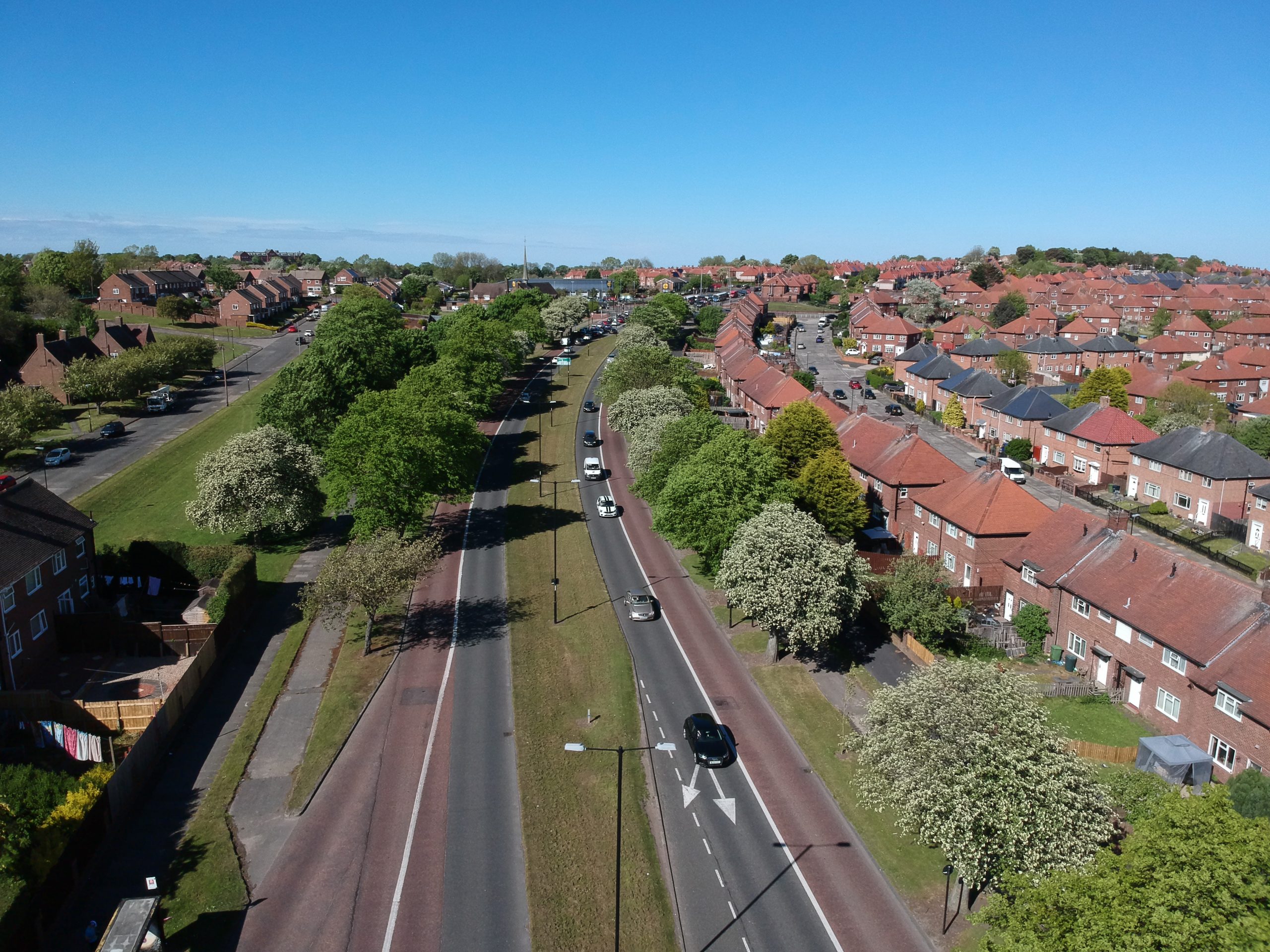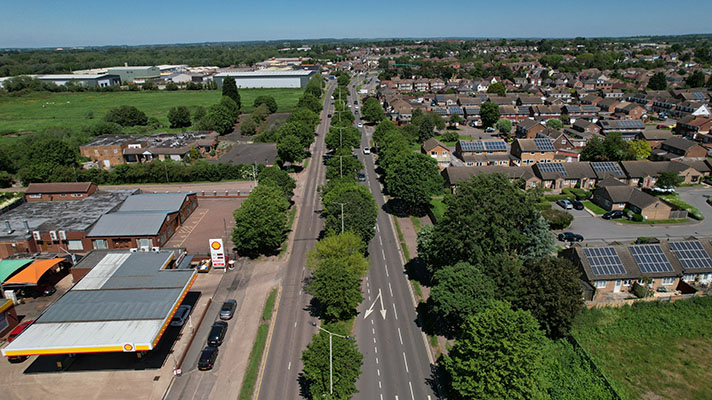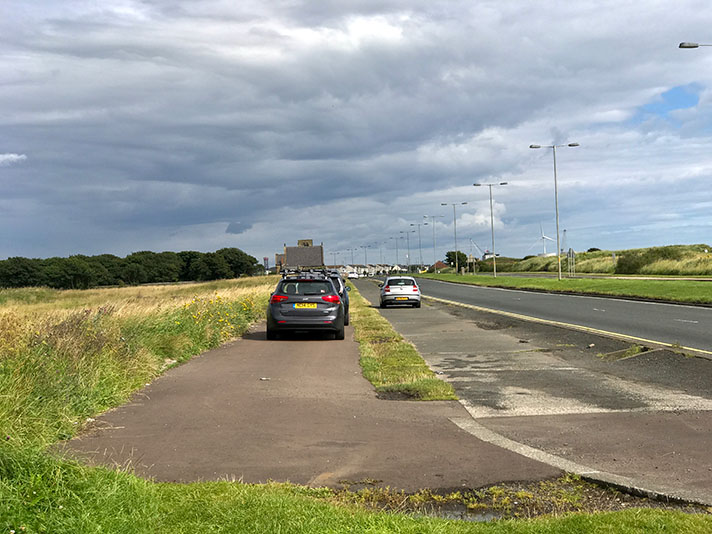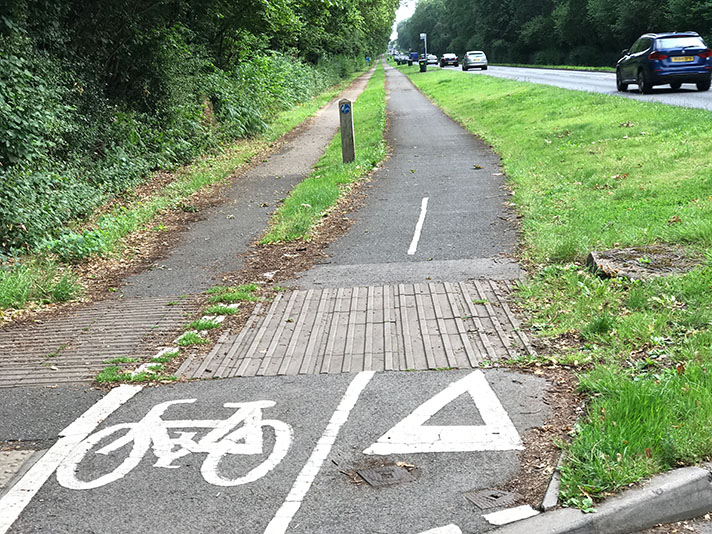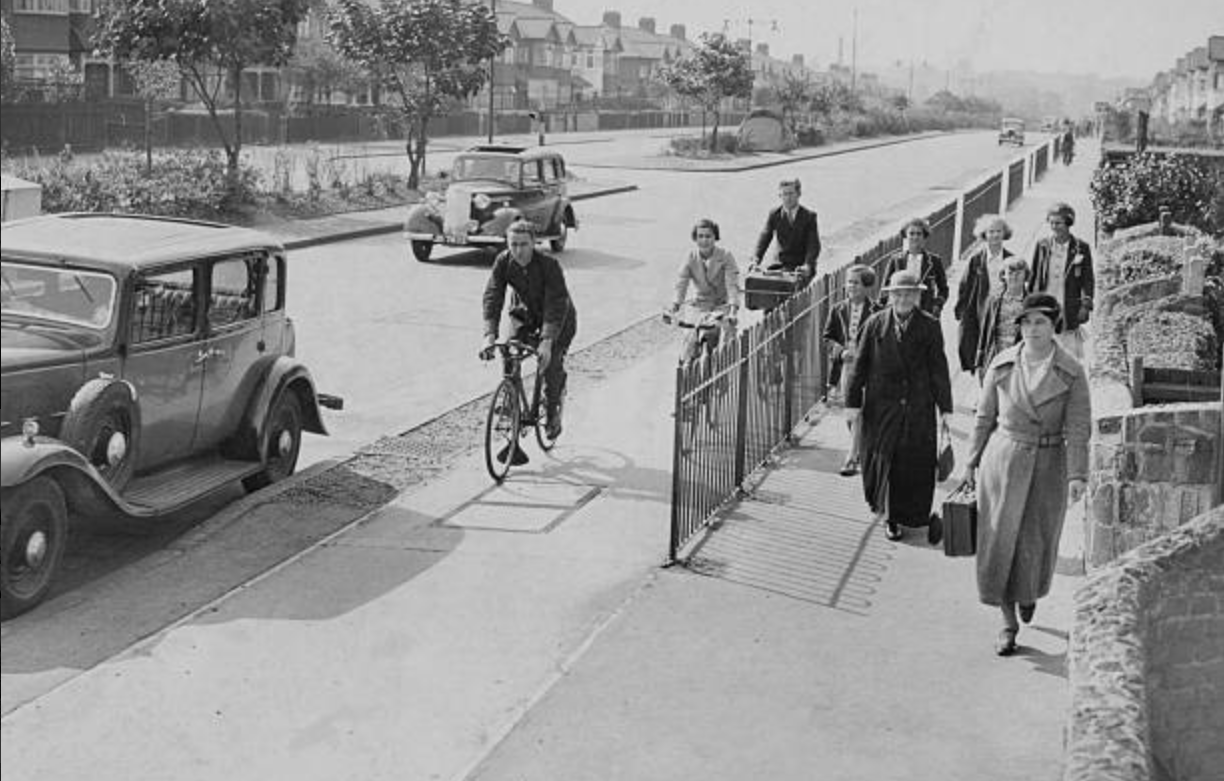
Agency photo of Eastern Avenue, 1937.
In a press agency photograph dated 26 September 1937, two men and a woman — all smartly dressed — are seen riding bicycles on a cycle track on Eastern Avenue, Ilford. On the adjoining footway there are two women, also smartly dressed, and five school girls, four of them in school blazers. The pedestrians are kept apart from the cyclists with steel railings. A car is parked on the road. The central reservation, lined with low kerbs, is planted with shrubs and small trees.
Today, that cycle track and footway are crowded not with people but with parked cars. There are still shrubs and (newly-planted) trees in the central reservation but it has been blocked with steel fencing and motorway style Armco barriers not to defend the greenery but to deflect speeding motorists. Cyclists — of which there are very few visible on Google Street View — are directed to ride on the road, protected with paint rather than separation.
In parts, the former cycle track is now marked out as somewhere official to store cars. The painted cycle-way often leaves the road and returns to what was the original cycle track.
The thirty-mile Eastern Avenue and the Southend Arterial Road to which it joins were built as a single project, starting in 1921. Both roads were officially opened by Prince Henry (later the Duke of Gloucester) on 25 March 1925.
Originally numbered as the A106 the road became the A12 after WWII.
Like many arterial roads of the 1920s, Eastern Avenue was provided with dual-sided wide footways along its full length. Some time after November 1935 — probably in Spring 1936 — these footways were halved on both sides by the introduction of “experimental” cycle tracks.
In 1937 a disgruntled C.T.C. member complained that the cycle track was only 3-ft wide; officialdom said it was 6-ft-wide.
“On the north side only of Eastern-avenue a 3ft strip has been taken from the existing footpath and converted into a concrete cycle track,” griped “F.J.T.” in the Nottingham Journal.
“The footpath is now only 4ft wide being only sufficient for two persons to walk abreast in comfort. Cyclists must, of course, go in single file,” F.J.T. continued.
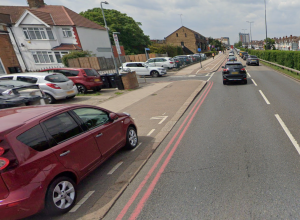
Some sections of Eastern Avenue’s cycle track is now used for storing parked cars.
Eastern Avenue’s cycle track started close to the Gants Hill junction and extended for 3.4 miles to Whalebone Road, Chadwell Heath.
Meeting on 19 November 1935, the highway committee of Essex County Council “considered a suggestion made by the Divisional Road Engineer, London Division, Ministry of Transport, that cycle tracks should be constructed on the Eastern Avenue, the London-Southend road, and the Barking by-pass. The Committee were in favour of cycle tracks being laid, as an experiment, on a length of Eastern Avenue, and they recommended that, subject to a grant of 60 per cent, from the Ministry, a cycle track, 6ft. in width, be constructed along each side the section of Eastern Avenue between its junction with County Road A1112 and Wanstead Lane at an estimated cost of £6,290.”
The cycle track took space away from pedestrians, with no separation of modes, unlike other schemes of this period.
“The lay-out of a cycle track in Eastern Avenue had been much criticised,” admitted a council highways committee on 18 May 1937.
“The track was laid in the only possible position, owing to the restricted width between the kerb and the fence line, and was adjacent to the footpath,” continued the report.
“There was, however, no defined division between the footpath and the cycle track, and difficulties arose, because the pedestrian and cycle traffic were not properly separated.”
A sub-committee “having made an inspection, were definitely of the opinion that it was necessary that the cycle traffic should be segregated from the faster and the heavier traffic, and that these tracks were not only a necessity, but would probably be of great benefit.”
The committee agreed that the county surveyor should erect a “guard fence between the footpath and cycle track, at an estimated cost of £500.”
And it’s this steel railing that can be seen in the agency photograph.


